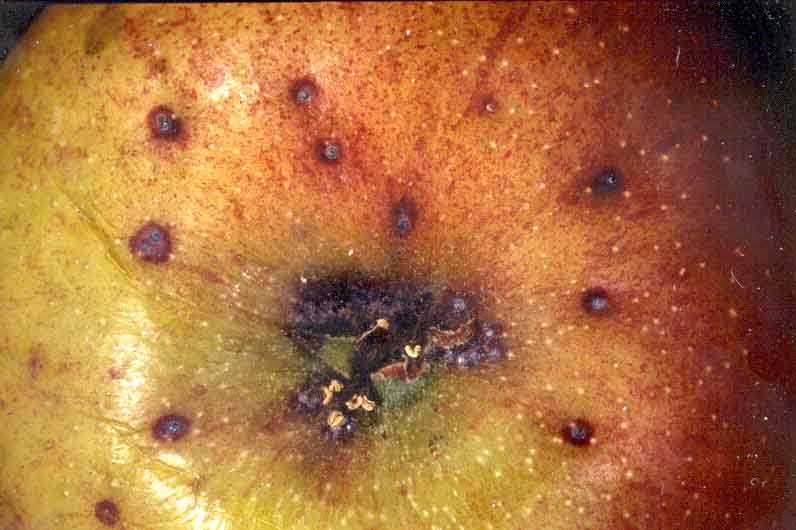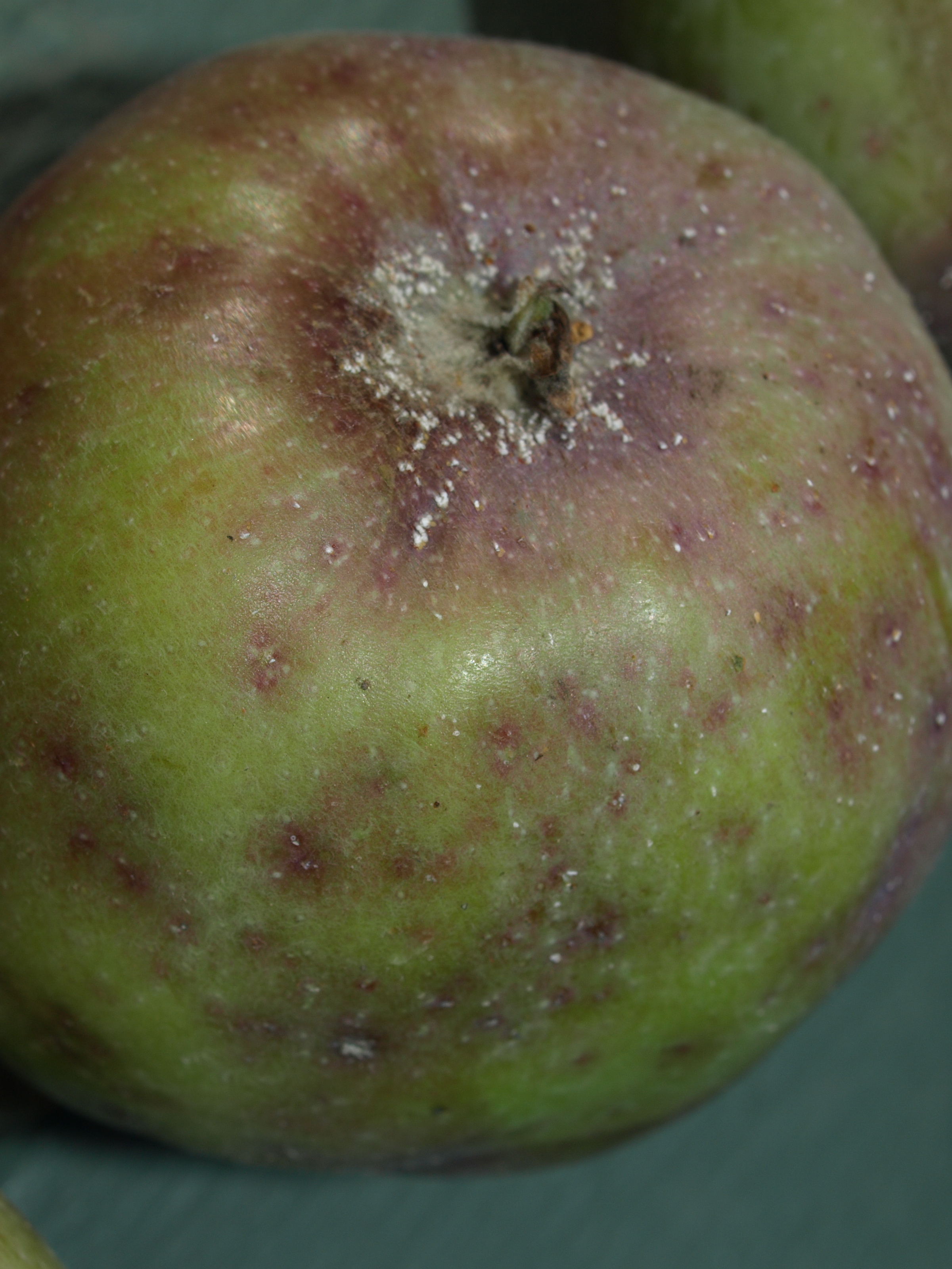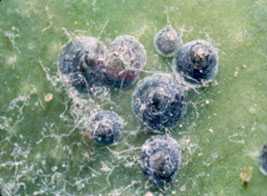European Fruit Scale
General Description
Hosts
Mainly apple, especially Newtown, McIntosh, Rome Beauty, Delicious, Winesap and crabapple; also on prunes and pears.
Damage
Bark - Only slightly discoloured, a very light brown under scales.
Fruit - Red spot around scale on all varieties except Newtown (Figs. 1, 2).

|
 |
| Figure 1. European fruit scale on apple. | Figure 2. European fruit scale infested apple (H. Philip) |
Identification
Crawler - Less than 0.5 mm long, wingless, yellow to orange in colour with legs and antennae.
Whitecap - Immobile with white loose shell-like cotton.
Blackcap - Hard, gray to black cone-shaped shell on or under rough bark of trunk and large limbs or on fruit (Fig. 3). Peak of shell is off-centre and has no grooves around it. Central area of underside of shell coloured black or deep yellow to orange. The shell covers a bright yellow immobile insect.
 |
| Figure 3. European fruit scales (Ontario Ministry of Agriculture, Food & Rural Affairs) |
Life History
European fruit scale overwinters in the immature blackcap stage on or under rough bark of scaffold limbs. Adults mature in spring, and winged males emerge near the pink stage of apples. Males fly or walk to reach pheromone-emitting females. The sedentary, shelled females produce living young called crawlers. Crawlers move to new feeding sites on fruit or bark, insert their sucking mouthparts to feed, secrete wax to form a shell and then lose their eyes, legs and antennae. There is only one generation per year.
Monitoring
Inspection of fruit at harvest or in the packinghouse will indicate whether a problem exists. Also look under scaly bark for scales; use double-sided sticky tape to detect crawlers on branches.
Management
Biological Control
Native predators and parasites are not adequate to prevent fruit infestation.
Cultural Control
Pruning to keep trees low and elimination of long pruning stubs will improve spray coverage.
Chemical Control
Apply thoroughly one or more sprays to protect fruit in infested blocks. A single well-applied spray at tight cluster will give adequate protection in orchards where there is no encrusted scale. Blocks with large trees having encrusted scale under rough bark require careful attention to spray coverage.
Recommended spray timings and products:
-
Dormant to tight cluster - See San Jose scale for recommended products and spray coverage.
Spray coverage - Complete spray coverage of the trees is extremely important in controlling scale. Because the scale caps lodge underneath rough bark, the spray material must run down behind loose bark to reach them. Effective control requires at least 2200 L/ha (200 gal./acre) of dormant or summer spray mixture.
On large old trees with encrusted scale under rough bark, an even higher volume of spray material is required. Apply the extra volume by handgun to ensure all limbs with rough bark are thoroughly drenched. Alternatively, the trees may be sprayed from four sides with an airblast sprayer using a total of 4500 L/ha (400 gal./acre) of spray mixture. When spraying trees from four sides, use the same travel speed and the same nozzle arrangement as when spraying from two sides, but put half the amount of chemical in the tank. Apply the same amount of chemical per hectare with twice the amount of water.
For satisfactory control with airblast sprayers, spray at low speed and only under absolute calm. Keep trees as low as possible and remove long pruning stubs that interfere with spray distribution. Remove props from trees before spraying.
In high density plantings, ensure the trunk and lower limbs are sprayed thoroughly as these areas provide sources of re-infestation later in the summer if left unsprayed in the spring.
